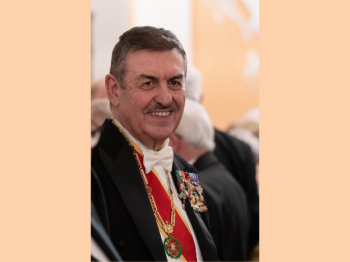Eight Years in the Service of the Order: A Path of Dialogue and Innovation

On 30 June, in accordance with Article 11 of the Constitution of the Order of the Holy Sepulchre, the Grand Master, Cardinal Filoni, signed a decree renewing “donec aliter provideatur” [until otherwise provided] the mandate of the Governor General, Ambassador Leonardo Visconti di Modrone. The Governor General holds the highest lay office within the Order and, as stipulated by the Constitution, serves as the central administrator responsible for its financial and economic management. As the Grand Master's closest collaborator, who rules and governs the Order, and is appointed by the Pope - the Governor maintains daily communication with His Eminence, presenting the needs of the Holy Land and reporting on his interactions with the Lieutenancies and the directives issued. In this article, Ambassador Visconti di Modrone reflects on the key milestones of his tenure during his first two terms. He also highlights the importance he places on dialogue as a source of strength and consensus, supporting innovative decisions aimed at adapting the Order’s governance to today’s needs and anticipating those of tomorrow.
The most rewarding aspects of my eight years serving as Governor General of the Order has undoubtedly been both the daily contact with the two Grand Masters who have held office during this period, Cardinal O’Brien and Cardinal Filoni and the ongoing dialogue with members in every corner of the world. I am deeply grateful for the kindness they have consistently shown me in supporting my initiatives.
I still remember the day I took on the role as Governor General. At the close of the Grand Magisterium meeting, I delivered my inaugural speech in which I expressed my desire to base my actions on continuous contact with all my confreres. This spirit of dialogue, even when it meant overcoming certain obstacles, has guided me from that first day on.



